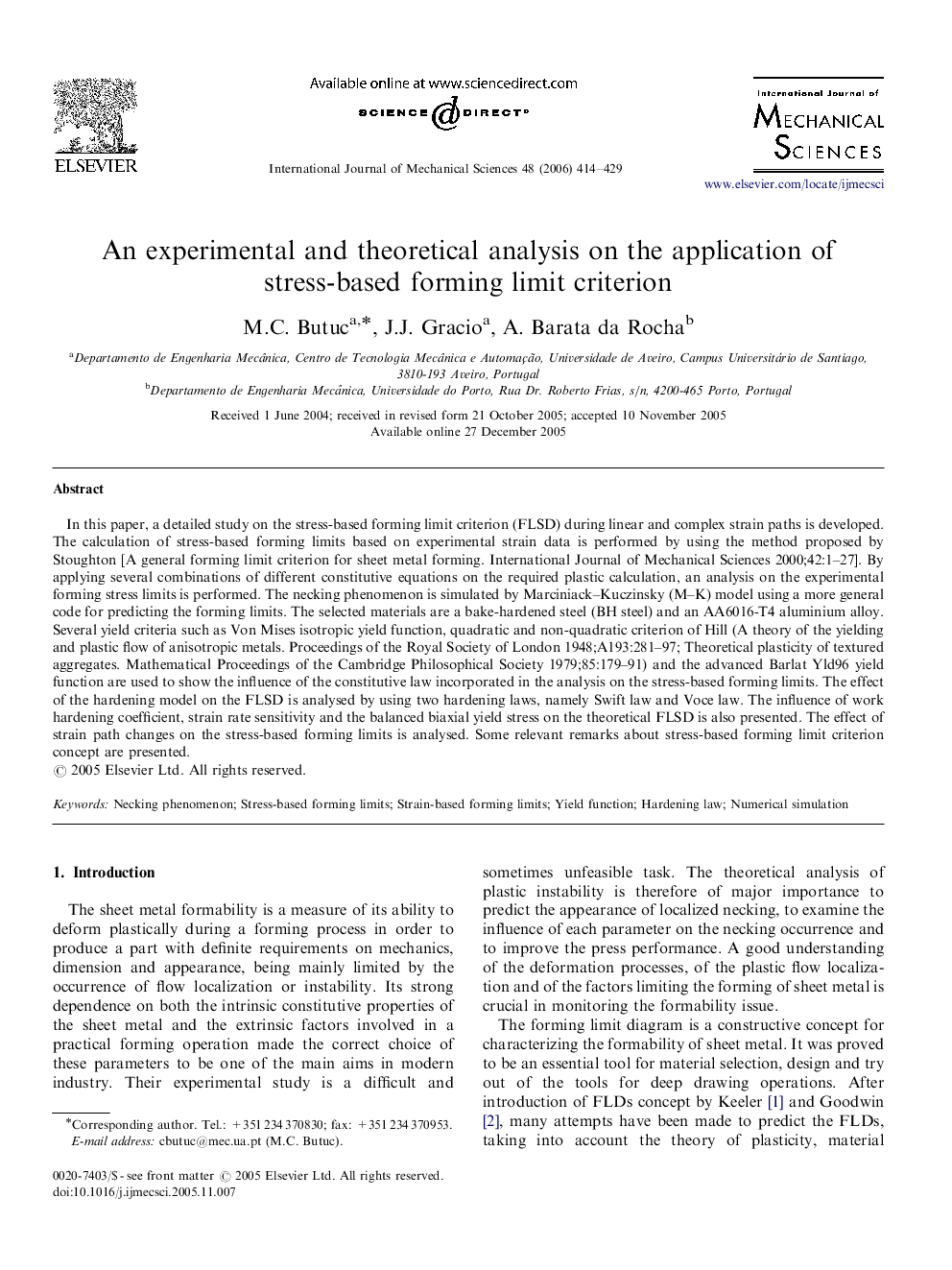| Article ID | Journal | Published Year | Pages | File Type |
|---|---|---|---|---|
| 780401 | International Journal of Mechanical Sciences | 2006 | 16 Pages |
In this paper, a detailed study on the stress-based forming limit criterion (FLSD) during linear and complex strain paths is developed. The calculation of stress-based forming limits based on experimental strain data is performed by using the method proposed by Stoughton [A general forming limit criterion for sheet metal forming. International Journal of Mechanical Sciences 2000;42:1–27]. By applying several combinations of different constitutive equations on the required plastic calculation, an analysis on the experimental forming stress limits is performed. The necking phenomenon is simulated by Marciniack–Kuczinsky (M–K) model using a more general code for predicting the forming limits. The selected materials are a bake-hardened steel (BH steel) and an AA6016-T4 aluminium alloy. Several yield criteria such as Von Mises isotropic yield function, quadratic and non-quadratic criterion of Hill (A theory of the yielding and plastic flow of anisotropic metals. Proceedings of the Royal Society of London 1948;A193:281–97; Theoretical plasticity of textured aggregates. Mathematical Proceedings of the Cambridge Philosophical Society 1979;85:179–91) and the advanced Barlat Yld96 yield function are used to show the influence of the constitutive law incorporated in the analysis on the stress-based forming limits. The effect of the hardening model on the FLSD is analysed by using two hardening laws, namely Swift law and Voce law. The influence of work hardening coefficient, strain rate sensitivity and the balanced biaxial yield stress on the theoretical FLSD is also presented. The effect of strain path changes on the stress-based forming limits is analysed. Some relevant remarks about stress-based forming limit criterion concept are presented.
